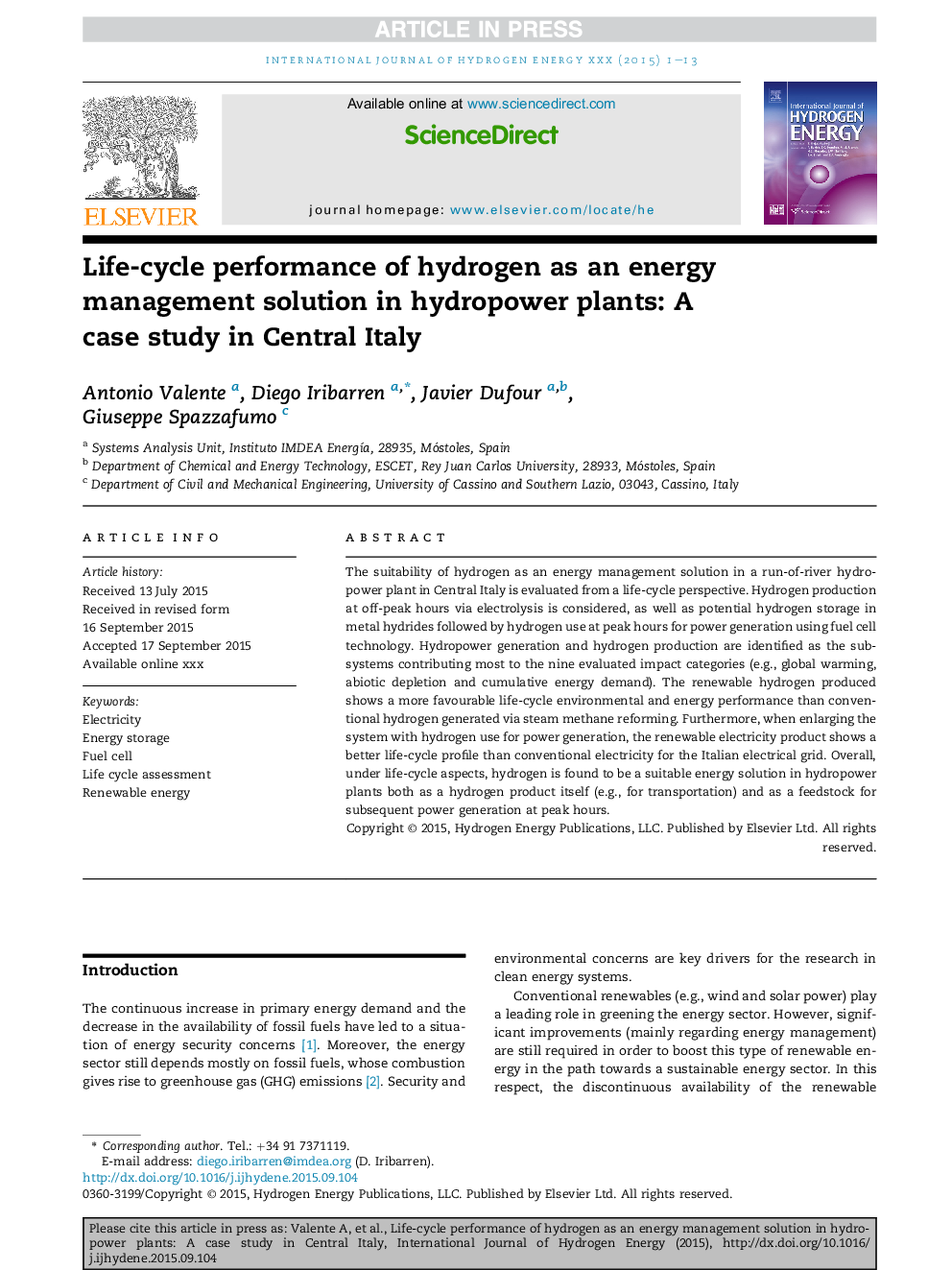| Article ID | Journal | Published Year | Pages | File Type |
|---|---|---|---|---|
| 7713686 | International Journal of Hydrogen Energy | 2015 | 13 Pages |
Abstract
The suitability of hydrogen as an energy management solution in a run-of-river hydropower plant in Central Italy is evaluated from a life-cycle perspective. Hydrogen production at off-peak hours via electrolysis is considered, as well as potential hydrogen storage in metal hydrides followed by hydrogen use at peak hours for power generation using fuel cell technology. Hydropower generation and hydrogen production are identified as the subsystems contributing most to the nine evaluated impact categories (e.g., global warming, abiotic depletion and cumulative energy demand). The renewable hydrogen produced shows a more favourable life-cycle environmental and energy performance than conventional hydrogen generated via steam methane reforming. Furthermore, when enlarging the system with hydrogen use for power generation, the renewable electricity product shows a better life-cycle profile than conventional electricity for the Italian electrical grid. Overall, under life-cycle aspects, hydrogen is found to be a suitable energy solution in hydropower plants both as a hydrogen product itself (e.g., for transportation) and as a feedstock for subsequent power generation at peak hours.
Related Topics
Physical Sciences and Engineering
Chemistry
Electrochemistry
Authors
Antonio Valente, Diego Iribarren, Javier Dufour, Giuseppe Spazzafumo,
